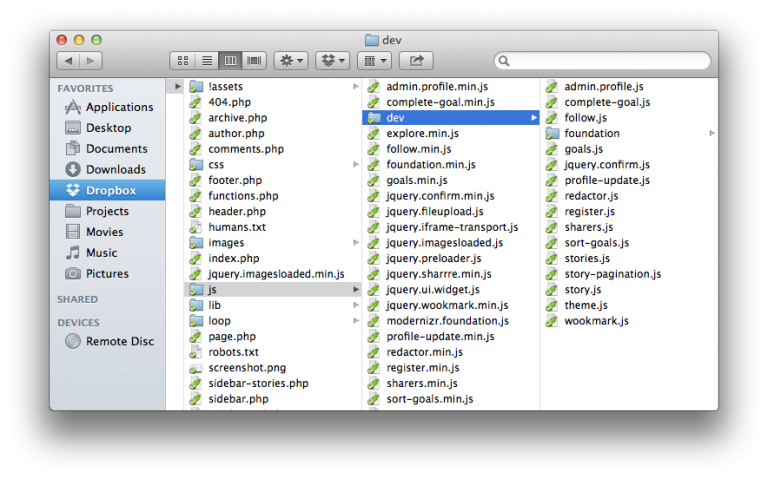Yesterday, I shared my strategy for using LESS in WordPress and enjoyed the comments that followed. In that post, I also mentioned that I have a similar strategy that I use to maintain my JavaScript files.
This particular aspect of development is one that I’m still experimenting with; however, there are certain aspects of it that have remained constant.
To follow up with yesterday’s post, I thought I’d share several things that I’ve consistently done that have improved development as well as some of the things that I’m currently doing that are proving to be useful.
With that said, here’s my current strategy for organizing JavaScript in WordPress.
Before covering how I organize my JavaScript files, note that I use CodeKit to manage my LESS files and JavaScript assets in my WordPress development. I mention this not because I think it has to be done (though I obviously believe it makes it easier), but also because it automates using some of the available tools such as JSLint.
1. Directory Structure

For the most part, my directory structure models the following structure:
- In the root of the theme or plugin directory, there is a
jsdirectory. This directory is where all minified JavaScript files live. This includes third-party libraries and my files all of which are minified - In the
jsdirectory, I maintain a subdirectory nameddevwhere I keep all of my pre-linted, pre-minified JavaScript sources. I used to keep all of my files along with third-party libraries in this folder, but I’ve since begun keeping third-party dependencies in another subdirectory usually calledlib. - At the absolute minimum, there will be a single less file:
theme.jswhich includes the basic JavaScript for a theme; however, I often includeadmin.jswhich is used to handle behavior in the dashboard. - Once linted and minified, all files are written to the root of the
jsdirectory and suffixed withmin.js.
When I’m working on a plugin, then I’ll use the name for plugin.js and if I’m working on a widget, then I’ll name the file widget.js.
2. On Using JSLint
When it comes to JavaScript code quality, JSLint and JSHint are arguably the two most popular tools. The primary difference is this:
- JSLint is written and managed by Douglas Crockford. It enforces a strict set of rules and the coding conventions as prescribed by him.
- JSHint is a derivative of JSLint that is arguably a bit more relaxed, and is managed by a community rather than a single person.
Generally speaking, I think using either tool is fine as long as you’re consistent (after all, you want your coding conventions to be consistent, right?), but I’m actually a fan of JSLint primarily because I like Crockford’s standards and style.
He’s the author of JavaScript: The Good Parts which I believe to be to JavaScript what K&R is to C, and that particular book changed the way that I write JavaScript.
3. Code Modularity and Including Files
In the comments of yesterday’s post, we discussed a modular approach to LESS-based development. Though I tend to think this is managed on a per-project basis, I generally create separate JavaScript files depending on the page to which they’re supposed to run.
For example, in a current project I have pages for:
- Registering Users
- Updating Profiles
- Sending data to the server via Ajax
As such, I have three separate JavaScript files:
- register.js
- profile-update.js
- story-submit.js
Then, on the server-side, I include each of these files whenever that specific page is being viewed.
For example, I use a single.php template for users submitting stories, so I have this in functions.php:
if( is_single() ) {
wp_register_script( 'story-submit', get_template_directory_uri() . '/js/story-submit.min.js', array( 'redactor-js' ) );
wp_enqueue_script ( 'story-submit' );
} // end if
This way, I’m only loading the files when I need them keeping the number of HTTP requests down, I don’t have to do any element checks in the JavaScript itself, and it makes the practice of progressive enhancement much easier.
All of that said, there are still things with which I’m experimenting, but these are the things that have remained constant throughout my last few projects.
As usual, I’m always interested to know how you guys organize your files, too so feel free to share them in the comments.


Leave a Reply
You must be logged in to post a comment.